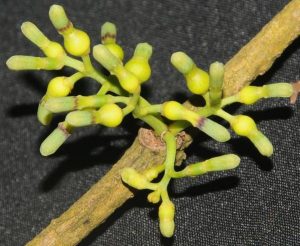THE INTERNATIONAL RELATIONS
1. INDIA-ASEAN DIGITAL WORK PLAN 2022
THE CONTEXT: During the second the 2nd ASEAN Digital Ministers (ADGMIN) meeting,India-ASEAN Digital Work Plan 2022 approved by the Union Ministry for Communications.
THE EXPLANATION:
- The ADGMIN is an annual meeting of Telecom Ministers of 10 ASEAN (Association of South-East Asian Nations) countries – Brunei, Cambodia, Indonesia, Laos, Malaysia, Myanmar, Philippines, Singapore, Thailand, and Vietnam and dialogue partner countries – Australia, Canada, China, EU, India, Japan, Republic of Korea, New Zealand, Russia, UK and US.
- The meeting discussed and deliberated various matters relevant to strengthening regional digital cooperation in the spirit of digital inclusion and integration.
About the Work Plan:
- The work plan includes system for combating the use of stolen and counterfeit mobile handsets, WiFi Access network interface for nationwide public internet, the capacity building and knowledge sharing in emerging areas in the field of Information and Communication Technologies such as Internet of Things (IoT), 5G, Advanced Satellite Communication, Cyber Forensics, etc. Communication Technologies such as Internet of Things (IoT), 5G, Advanced Satellite Communication, Cyber Forensics, etc. The ongoing and proposed projects in ICTs, will strengthen collaboration between India and ASEAN by leveraging complementary strengths of each other.
THE ENVIRONMENT & ECOLOGY
2. PARASITIC FLOWERING PLANT DISCOVERED FROM NICOBAR ISLANDS

THE CONTEXT: A new genus of a parasitic flowering plant has recently been discovered from the Nicobar group of islands. The genus Septemeranthus grows on the plant species Horsfieldia glabra (Blume) Warb.
THE EXPLANATION:
- It is endemic only to the Nicobar group of islands.
- The genus Septemeranthushas a distinct vegetative morphology, inflorescence architecture and floral characters. The leaves of the plant are heart-shaped with a very long tip and the ovary,fruit and seeds are ‘urceolate’ (earthen pot-shaped).
- In addition to Septemeranthus, four other genera on non-parasitic plants, Nicobariodendron (Hippocrateaceae), Pseudodiplospora (Rubiaceae), Pubistylis (Rubiaceae), Sphyranthera, (Euphorbiaceae) have also been discovered earlier from Nicobar group of islands, highlighting the ecological significance of the region.
- The newly discovered plant that derives nutrients from its hosts has green leaves capable of photosynthesis.
THE ECONOMIC DEVELOPMENT
3. THE DESIGN-LINKED INCENTIVE (DLI) SCHEME
THE CONTEXT: Recently, India has invited applications from 100 domestic companies, startups and small and medium enterprises to become a part of the design-linked incentive (DLI) scheme. Along with it the IT ministry has sought proposals from academia, start-ups and MSMEs to train 85,000 qualified engineers on semiconductor design and manufacturing.
What is the DLI scheme?
- The DLI scheme aims to provide financial and infrastructural support to companies setting up fabs or semiconductor making plants in India.
- It will offer fiscal support of up to 50% of the total cost to eligible participants who can set up these fabs in the country. It will also offer fiscal support of 30% of the capital expenditure to participants for building compound semiconductors, silicon photonics and sensors fabrication plants in India, under this scheme.
- According to MeitY,an incentive of 4% to 6% on net sales will be provided for five years to companies of semiconductor design for integrated circuits, chipsets, system on chips, systems and IP cores. It is expected to facilitate the growth of at least 20 such companies which can achieve a turnover of more than ₹1500 crore in the coming five years.
GLOBAL PLAYERS:
- According to estimates by NXP semiconductors. A small number of chipmakers based largely in Taiwan and South Korea produce up to 70% of the world’s semiconductors.
- The EU has also announced a public-private semiconductor alliance with the goal of increasing Europe’s chip production share to 20% by 2030.
CHALLENGES FOR INDIA:
- Setting up fabs is capital intensive and needs investment in the range of $5 billion to $10 billion.
- Lack of investments and supportive government policies are some of the challenges in India.
- Crucial infrastructure like connectivity to airports, seaports and availability of gallons of pure water are the other challenges to set up fabs in India.
HOW THIS SCHEME BENEFITS ?
- The DLI scheme aims to attract existing and global players as it will support their expenditures related to design software, IP rights, development, testing and deployment.
- It will boost the domestic companies, start-ups, and MSMEs to develop and deploy the semiconductor design. It will also help global investors to choose India as their preferred investment destination.
- The firm reckons that this is a big step to bring India on the world map for semiconductor manufacturing.
According to experts, the Design Linked Incentive (DLI) scheme along with the recent Production-Linked Incentive (PLI) scheme have become crucial in shaping India as an efficient, equitable, and resilient design and manufacturing hub.
4. WHAT IS REVERSE REPO NORMALISATION?
THE CONTEXT: State Bank of India’s economic research team believes the stage is set for a reverse repo normalization.
THE EXPLANATION:
- The RBI’s revised liquidity management framework (February 2020) has retained the width of the liquidity management corridor at 50 basis points – the reverse repo rate being 25 basis points below the repo rate (of 4 per cent) and the Marginal Standing Facility rate 25 basis points above the repo rate.
- The purpose of the aforementioned cut in reverse repo rate was to make it relatively unattractive for banks to passively deposit funds with the Reserve Bank and use these funds for on-lending to productive sectors of the economy.
| What is Normalisation?
Normalisation means raising the reverse repo rate in one or two stages, means the reverse repo rate (the interest rate banks earn for parking surplus liquidity with RBI) of 3.35 per cent can be raised to 3.75 per cent in one or two stages. |
- This process of normalisation, which is aimed at curbing inflation, will not only reduce excess liquidity but also result in higher interest rates across the board in the Indian economy — thus reducing the demand for money among consumers (since it would make more sense to just keep the money in the bank) and making it costlier for businesses to borrow fresh loans.
5. INDIA-UAE VC FUND SET UP TO BOOST START-UP ECOSYSTEM
THE CONTEXT: A $150-millionIndia-UAE venture capital fund to fuel growth of start-ups in India and the UAE was launched at EXPO2020 Dubai.
THE EXPLANATION:
- The VC Fund is a first-of-its-kind to be set up in the UAE to source, invest and nurture promising start-ups through an accelerator to fuel the growth of India-UAE start-ups. It will be funded by investors across UAE, India and wider GCC countries.
- The Fund will also act as a catalyst to provide a process for developing early-stage start-ups in India and the UAE into viable global ventures and making them attain the unicorn level. It will target to invest in a minimum of 50 demonstrated and validated start-ups based in India and the UAE over a period of 5 years, turning 10 unicorns by 2025.
What is meant by Venture Capital?
- Venture Capital is a financing tool for companies and an investment vehicle for wealthy individuals and institutional investors. Wealthy investors like to invest their capital in startups with a long-term growth perspective.
- This capital is called venture capital and the investors are called venture capitalists, in other words, it is a way for companies to receive money in the short term and for investors to grow wealth in the long term.
THE SCIENCE AND TECHNOLOGY
6. THE MOLECULAR BIOLOGY OF ASAFOETIDA
THE CONTEXT: In 2020, the scientists from the Council of Scientific and Industrial Research (CSIR) — Institute of Himalayan Bioresource Technology (IHBT) based in Palampur, Himachal Pradesh, announced that they had planted 800 saplings of Ferulaasafoetida in the cold desert region of Lahaul and Spiti.

THE EXPLANATION:
- ASAFOETIDA (hing in Hindi, perungayam in Tamil): An integral part of Indian cuisine and natural medicine, asafoetida is extracted from the fleshy roots of the perennial ferula (part of the celery family) as an oleo-gum resin. It is also known colloquially as “devil’s dung” in English.
- Cold desert climatic conditions in the Lahaul–Spiti area in Himachal Pradesh are remarkably similar to those in the Iran and Afghanistan. Efforts are being done to grow it in that area.
- It has a pungent smell due to sulphide content, as reflected in its name, lending it the trivial name of “stinking gum”. The odour dissipates upon cooking; in cooked dishes.
- The chemical constituents shows that the raw herb has about 70% carbohydrates, 5% proteins, 1% fat, 7% minerals, and has compounds of calcium, phosphorus, sulphurand various aliphatic and aromatic alcohols.
What is the Need?
According to the CSIR-IHBT, Palampur, “the country imports about 1,540 tonnes of raw asafoetida annually from Afghanistan, Iran and Uzbekistan and spends approximately ₹942 crore per year on it. It is important for India to become self-sufficient in hing production”.
It has a wide range of applications in the field of medicine:
- It has been suggested to fight viruses such as influenza.
- Ayurveda suggests it for good digestion.
- To stop hiccups.
THE PRELIMS PRACTICE QUESTIONS
QUESTION OF THE DAY 31ST JANUARY 2022
Consider the following statements about Bomb cyclone:
- It is a kind of tropical cyclone.
- It occurs when a storm central barometric pressure drops at least 24 millibars in 24 hours.
- It can happen when a cold air mass collides with a warm air mass.
Which of the statements given above is/are correct?
a) 1 and 2 only
b) 2 and 3 only
c) 3 only
d) All of them
ANSWER FOR 29TH JAN 2022
Answer: d)
Explanation:
- Statement 1 is correct: The electoral bonds will not bear the name of the donor. Thus, the political party might not be aware of the donor identity.
- Statement 2 is correct: The electoral bond will be valid only for fifteen days.
- Statement 3 is correct: A donor will get a tax deduction and the recipient, or the political party, will get tax exemption, provided returns are filed by the political party.
- Statement 4 is correct: On April 12, 2019, the Supreme Court asked all the political parties to
submit details of donations received through electoral bonds to the ECI.

